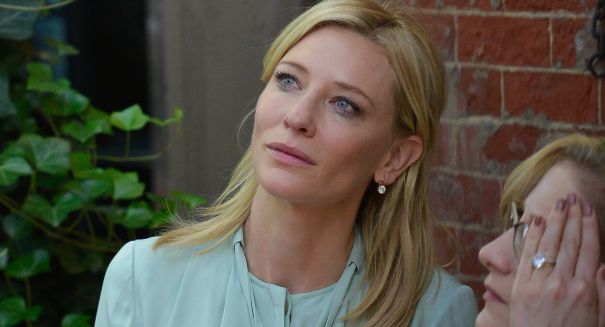Blue Jasmine
“Blue Jasmine” is a perfect film, the first perfect film I’ve seen all year. It is smart, well-written, entertaining, beautifully filmed and the performances are unbelievably good. The film is also more remarkable for what it demonstrates of the faculties of Woody Allen. After his amusing but rather shallow exercises of the past years, not only with his European forays but even before (remember “Whatever Works”? I didn’t think so), he manages to completely renew himself and come up with this astounding variation on Tennessee Williams’s “Streetcar Named Desire.” (After having read extensively on the “making of,” I still don’t know if Allen used that play as direct inspiration or simply wrote a similar story.)
Cate Blanchett gives a stellar performance as the socialite who has lost her dream New York life as wife of a dream New York financial wizard (Alec Baldwin) who gave her all the trappings of a dream life (Park Avenue, the Hamptons, and Europe)—if a dream life can be defined solely by Louis Vuitton, Hermès, Chanel, Van Cleef & Arpels, Roger Vivier, dinner at le Cirque and extravagant parties. Unfortunately, the financial wizard turned out to be a Madoff copycat who has since hanged himself in jail. Jasmine (formerly Ginette) now destitute as the government has grabbed all her assets following her husband’s indictment, and hooked on Xanax, moves to San Francisco (with her superb set of L.V. luggage) to stay with her blue-collar sister Ginger, sliding a few pegs down the social ladder.
Ginger has a shabby apartment, a job bagging groceries, a former husband (Andrew Dice Clay) who was conned out of his lottery winnings—his one chance at having a business of his own—by Jasmine’s husband, an attractive brute of a boyfriend (Bobby Canavale) and a short affair on the side with Al (Louis C.K.). Jasmine is appalled by these lower life forms of whose existence she had remained unaware before this new reality hit. The head-on collision of the socialite in her designer togs and these working-class stiffs is cringe-inducing. It’s also spot-on funny. The flashbacks to Jasmine’s grand former life are not chronological but seamlessly incorporated in her ongoing and losing battle to make a new life for herself—including a stint as dental assistant and a brief fling that turns sour with a cool State Department type (Peter Saarsgard).
Critics and the public have bestowed much deserved praise on the performers. Beside the pitch-perfect Blanchett—a shoo- in for an Academy Award as it’s hard to see how anyone could top acting of this level—there’s Sally Hawkins of “Happy-Go-Lucky” fame, a delight as the much put-upon sister. Each and everyone of the rest of the cast inhabit their character with grace and talent, forming an unforgettable ensemble. For once, there are no Woody Allen stand-ins perorating on the indignities of life. As in all Woody Allen films, a city has a starring role—not New York of which there are but a few shots to celebrate Allen’s return to the States but San Francisco.
“Blue Jasmine” gives us Woody Allen in top form, making us realize that the French probably have it right when they say he’s the true genius of contemporary American cinema. And the word director takes on a double meaning here, for not only does Allen function as the film’s director but one can visualize him using his baton to direct this inspired orchestra, performers and settings and all, and doing it in top form, with glee. Which is just the sentiment that we have as we leave the theater.


